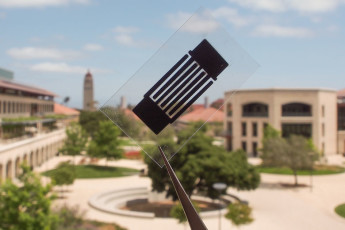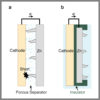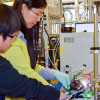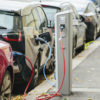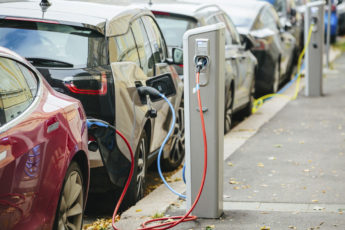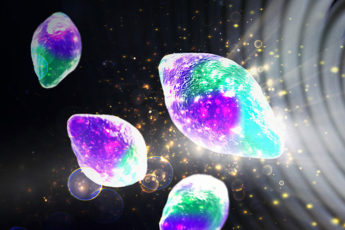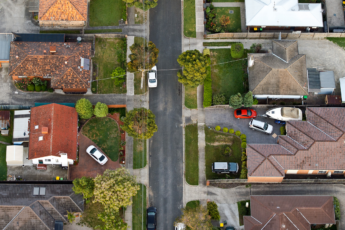Future of energy: Energy storage
This story is part of a series on Stanford collaborations helping to create the Future of Energy.
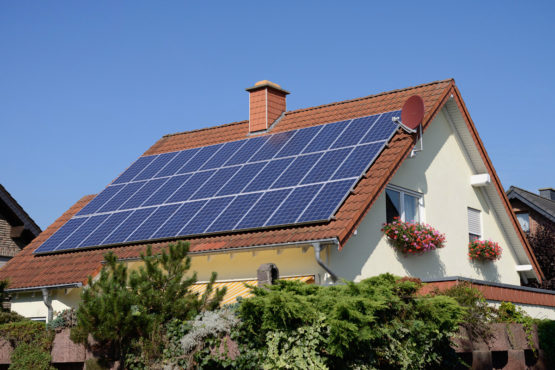
A battery developed in Stanford Professor Hongjie Dai’s lab could provide low-cost storage for solar energy. (Image credit: Getty Images)
With conventional fossil-fuel power plants, managers can easily ramp up energy production when people need it most. That’s not always possible with wind or solar. Instead, we need an electric grid that can handle variable sources of energy, and ways of storing or producing energy when it’s needed.
Electric grid
A major goal is to modernize the electric grid so that it can deliver energy more efficiently from a variety of sources including renewables. To this end, a campus-wide initiative, Bits & Watts, led by Arun Majumdar, a professor of mechanical engineering and of photon science, and Frank Wolak, a professor of economics, is exploring advanced techniques like big data, sensors and economic modeling.
“As we incorporate more low-carbon, highly variable sources like wind and solar, we’ll need a whole new set of tools, from computing and communications to controls and data sciences, to keep the grid stable, efficient and secure and provide affordable electricity,” Majumdar said.
One Bits & Watts project, led by Ram Rajagopal, an assistant professor of civil and environmental engineering, focuses on consumer demand. Rajagopal has developed software that analyzes electricity use, weather and other real-time data to obtain a detailed understanding of customers’ behavior when power supplies are stressed.
“Everyone has some randomness in behavior, but certain patterns can be identified and ultimately estimated,” said Rajagopal. “That allows a utility to offer demand/response incentive programs that are tailored to each customer’s patterns, moving them away from power consumption during peak loads.”
Better batteries
Scientists are looking to batteries or other storage technologies to hold surplus renewable power for use on demand. Engineering professors Zhenan Bao and Yi Cui have identified a suite of materials including pure lithium, designer carbon and silicon that could increase the longevity and energy-storage capacity of batteries.
The challenge is that the batteries need to be low cost, store large amounts of energy and be robust enough to cycle through charging by day and discharging at night through thousands of cycles.
“If you think about green scale storage, you want 20, 30 years lifetime,” said Cui. “Every day if you do one cycle, you can calculate with 30 years, you roughly need 10,000-cycle batteries lasting for 30 years. We don’t have a battery yet which can do such a long cycle life. That’s the number one challenge we are facing. Number two is, you still need the cost to be very low.”
Renewable fuels
Others are experimenting with converting excess electricity into renewable fuels for transportation. Chemistry professors Hongie Dai and Chris Chidsey, for example, are developing ways of using solar energy to split water into oxygen and clean hydrogen gas to power cars and trucks.
One widely used transportation fuel is ethanol, which is typically made from corn and other crops. Chemists Thomas Jaramillo and Matthew Kanan are studying a variety of metal catalysts that use renewable forms of electricity to make ethanol out of molecules in the air rather than from crop plants like corn.
“One of our long-range goals is to produce renewable ethanol in a way that doesn’t impact the global food supply,” said Jaramillo, an associate professor of chemical engineering. “The eye on the prize is to create better catalysts that have game-changing potential by taking carbon dioxide as a feedstock and converting it into much more valuable products using renewable electricity or sunlight directly.”




